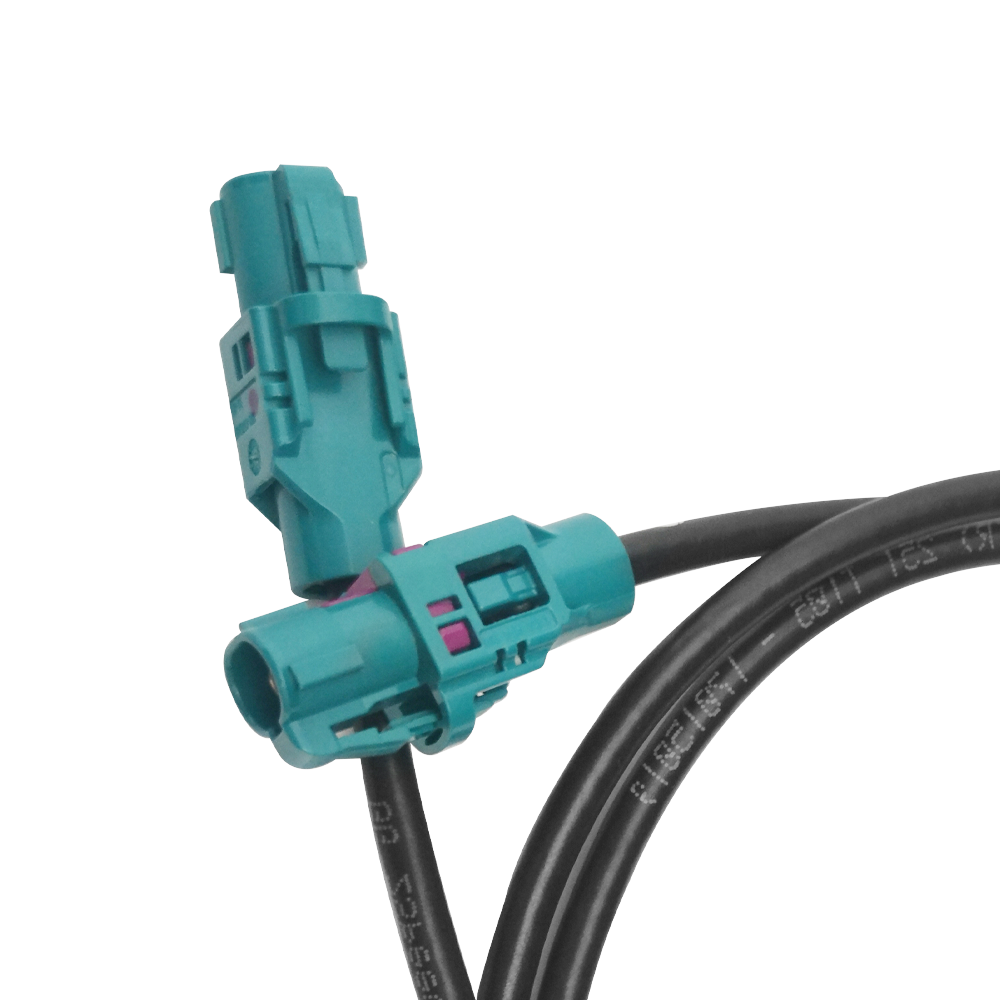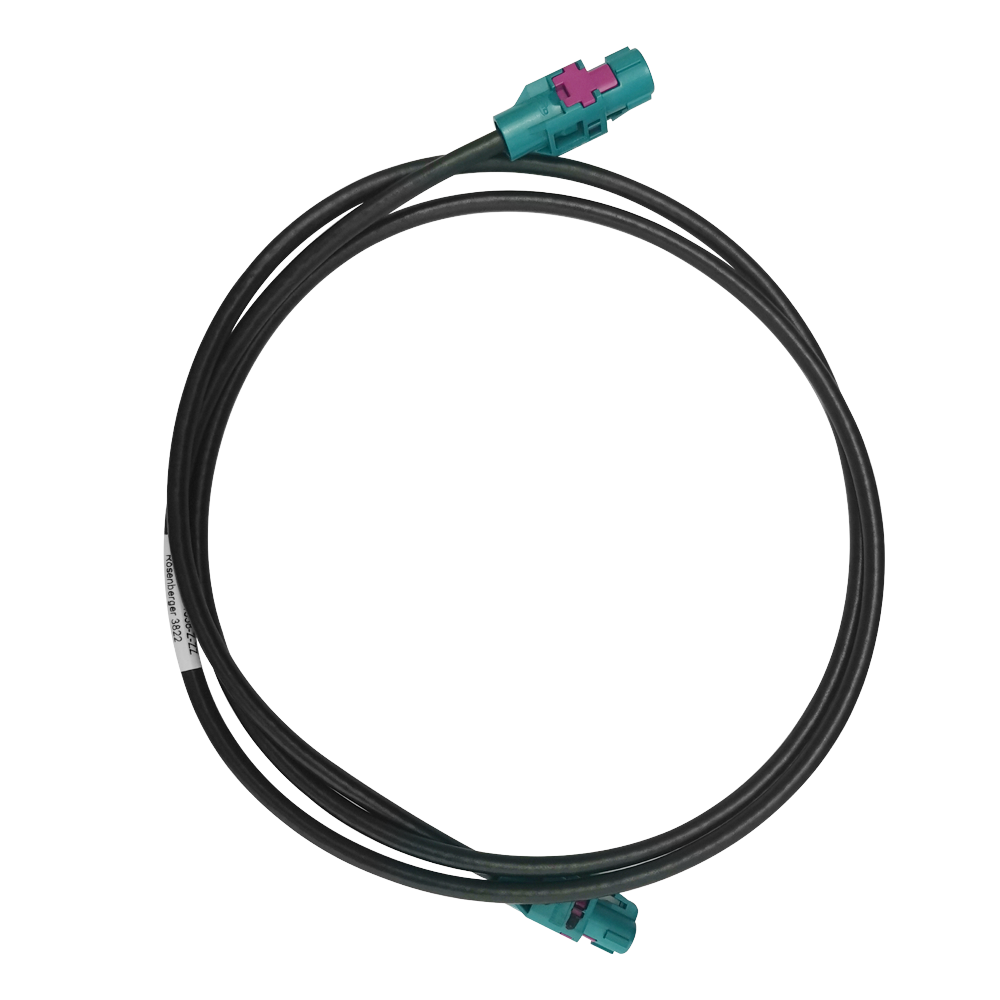How H-MTD Enhances Advanced Driver Assistance Systems (ADAS)

Advanced Driver Assistance Systems (ADAS) play a crucial role in modern vehicles, enhancing safety and efficiency on the road. These systems rely on cameras and radar to assist drivers, requiring rapid data processing capabilities. H-MTD technology, developed by LEADSIGN electronics, is instrumental in meeting these demands. It facilitates swift data transmission, essential for ADAS functionality. Additionally, H-MTD is highly effective for video and audio technology within automotive environments, making it a vital component of vehicle networks. This discussion highlights how H-MTD technology enhances ADAS by boosting data speed and system reliability, while also integrating seamlessly with advanced wire systems.
Understanding H-MTD Technology
Overview of H-MTD
Definition and Basic Principles
H-MTD means High-Speed Modular Twisted-Pair Data. It's a connector system for car networks. H-MTD can handle frequencies up to 20 GHz. It sends data at speeds up to 56 Gbps. The flexible design of H-MTD suits many uses like ADAS, self-driving, 4K cameras, and clear displays.
Key Features and Specifications
H-MTD connectors have important features:
They support high frequencies up to 20 GHz.
They send data at speeds reaching 56 Gbps.
They work with different car applications.
They save space and reduce weight.
H-MTD connectors are crucial for new car designs. These help in sending data quickly for advanced tech like radar and lidar systems.
Evolution of H-MTD in Automotive Industry
Historical Development
H-MTD was made because cars needed faster data transfer. Old wires couldn't keep up with new car needs. H-MTD set new rules for car networks. It grew to fit more complex car setups.
Current Trends and Future Prospects
Now, cars are moving to zonal designs. H-MTD is key in this change. Zonal designs make car networks safer and better. More cars use H-MTD now. In the future, it will be used more in self-driving tech and other new car technologies.
Role of H-MTD in ADAS

Enhancing data transmission
Importance of high-speed data in ADAS
ADAS needs quick data processing. Fast data is key for real-time choices. Cameras and radar in ADAS need fast data to work well. High-resolution sensors make lots of data. Networks must handle this quickly. SAE International says next-gen ADAS needs more speed and bandwidth.
How H-MTD improves data transmission rates
H-MTD boosts how fast data moves a lot. The connectors can handle up to 20 GHz frequencies. Data speeds can go up to 56 Gbps. This meets modern ADAS needs. Signal Integrity Journal talks about H-MTD's fast rates. It helps vehicle networks move data well. H-MTD saves space and weight, which helps car design.
Improving system reliability
Reducing latency and errors
H-MTD helps cut down on waiting times. Quick data transfer means less delay for ADAS tasks. Less waiting means faster responses. Fewer mistakes happen with good connections. H-MTD keeps data stable when moving it around.
Ensuring consistent performance
Steady performance is key for ADAS trustworthiness. H-MTD makes sure the flow of data stays steady. Connectors keep high-speed even under tough conditions. Car networks gain from this steadiness, making driving safer with reliable ADAS features.
Comparing Technologies
H-MTD vs Old Ethernet
Speed and Efficiency
H-MTD connectors work with frequencies up to 20 GHz. They send data as fast as 56 Gbps. Old Ethernet can't do this. Fast data is needed for advanced driver help systems (ADAS). H-MTD keeps data moving well in car networks.
Cost and Setup
H-MTD saves space and weight when installed. Its design fits easily into cars. Old Ethernet might need more room and stuff. H-MTD can change between different Ethernet types easily. This includes two-way conversion.
H-MTD vs Other Car Network Solutions
Pros and Cons
H-MTD is great for high frequency and speed. Other networks might not be as good here. H-MTD also saves space and weight, but others might cost less. Yet, they could be slower or less efficient.
Uses and Applications
H-MTD works in many car tech areas like ADAS, self-driving, and 4K cameras. Other networks may focus on easier tasks. H-MTD performs well in tough situations, making it perfect for new car networks.
Challenges and Solutions
Technical challenges in using H-MTD
Fitting with old systems
Car makers find it hard to add H-MTD tech to old car systems. Old cars use regular wires that can't handle fast data like H-MTD. Changing this needs careful work so nothing breaks. Engineers must check the old setup and see where H-MTD can fit or replace wires. This means updating both software and hardware for the new tech.
Fixing compatibility problems
Problems happen when car parts don't talk well together. H-MTD must work with different car rules and standards. Engineers need to make sure H-MTD fits these rules to keep things working right. Testing helps find and fix problems before using it everywhere. Car makers often team up with others to solve these issues, making sure everything works smoothly.
Solutions and new ideas
New improvements in H-MTD tech
New changes in H-MTD make it more flexible and easy to change. The design lets it be customized for different car uses easily. Better materials make connectors last longer even in tough spots. These changes help send data faster while saving space and weight, making H-MTD great for today's cars.
Future ideas and possible changes
Future plans for H-MTD look at using it beyond just cars now. People are finding ways to mix H-MTD with new tech like SerDes, which can send data even faster with better signals. Possible changes include making connectors smaller and better at handling big Ethernet jobs. As cars keep changing, H-MTD will be key in helping new car networks grow.
Uses of H-MTD in Car Systems
Video and Sound Tech Connection
Role in 4K Cameras and Screens
H-MTD connectors are key for 4K cameras and screens in cars. They handle up to 20 GHz, helping send clear video fast. This is important for driver help systems. The connectors make sure camera data gets to the car's computer quickly and clearly. This helps drivers see better and make smart choices on the road.
Better Infotainment Systems
H-MTD makes car entertainment systems better with fast data transfer. It helps mix audio and video smoothly, so passengers enjoy great shows. Its design works with different Ethernet uses, making it flexible for new setups. This makes H-MTD perfect for today's car entertainment needs.
Wiring and LEADSIGN Electronics
Good Things About Multiheaders
Multiheaders in H-MTD tech help car wiring a lot. They let many connections happen through one spot, making things simpler. This easy setup boosts how well the car's electronics work too. It's part of LEADSIGN's push for smart car network ideas.
Saving Space and Weight in Car Wiring
H-MTD connectors save space and weight in car wires. Their small size means less room is needed, making cars lighter. Lighter cars use less fuel and perform better. Saving space makes H-MTD a good pick for makers wanting smart designs without losing features.
H-MTD connectors make ADAS better by sending data fast. They work with frequencies up to 20 GHz and speeds of 56 Gbps. This meets the needs of new ADAS systems. The design fits many Ethernet uses, making H-MTD key for car networks today. Future changes in H-MTD will mix with new tech like SerDes. Ongoing research will keep improving it, ensuring H-MTD stays a leader in car tech advancements.
See Also
Exploring the Impact of HFM on Driver Assistance Systems
Improving Automotive Systems with USB Connectivity for HSD
Discovering the Benefits of High-Speed FAKRA-Mini in Autonomous Driving with HFM
Benefits of Automotive Systems with HSD Connectors
Revolutionizing the Industry: The Impact of HFM Technology on Autonomous Driving

